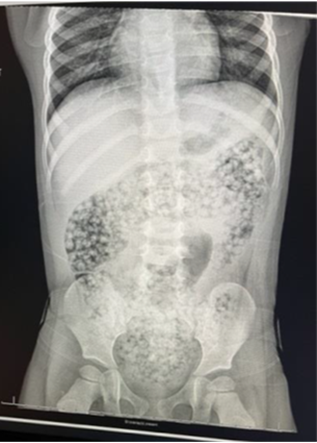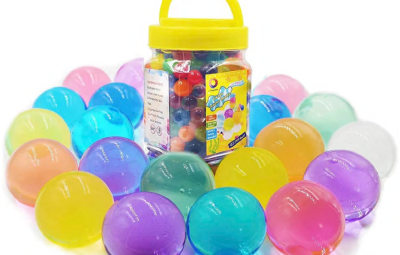
Water Beads: A Danger to Young Children & Can Be Deadly if Swallowed
CPSC has heard heartbreaking stories from parents whose children ingested water beads and suffered severe consequences, including grave internal injuries, lifelong health impacts and death. CPSC has also issued product safety warnings related to new evidence pointing to acrylamide toxicity in some water bead products.
The product warnings highlight that water bead hazards can go beyond ingestion, expansion and obstruction inside a child. Acrylamide is a known carcinogen. The large water beads in CPSC’s warnings contain levels of acrylamide in violation of the Federal Hazardous Substances Act.
CPSC data show that nearly 7,000 water bead-related ingestion injuries were treated in emergency departments in the U.S. from 2018 through 2022. CPSC is also aware of the death of a 10-month-old girl in 2023.
What are Water Beads?
Water beads look harmless – almost like candy – but can be deadly to babies and small children if ingested; and can lead to choking, internal injuries and even death if left undetected.
Water beads, often sold as toys, in craft kits, as sensory tools for children with developmental disabilities or for agricultural use, are small, water-absorbing, often colorful balls of super absorbent polymer and can grow 100X their original size when exposed to water.

Image of water beads in a child’s intestines. Water beads are associated with thousands of emergency-department visits every year.
How do Water Beads work?
Dry water beads can be the size of a pinhead, making them nearly undetectable if dropped on the floor or spilled in a playroom.
Ingested water beads can continue to grow inside the body. This can cause severe discomfort, vomiting, dehydration, intestinal blockages and life-threatening injuries, and surgery may be required to remove the water beads.
Water beads inserted into ears can damage ear structures, causing hearing loss and require surgery.
Water beads are associated with [i]thousands of emergency-department visits every year.
What is the warning?
CPSC urges parents and caregivers to remove these products from any environment with children. CPSC also urges childcare centers, camps, and schools to avoid these products entirely. If you suspect your child has swallowed a water bead or inserted a water bead into their ear or nose, seek medical treatment right away.
Safety Tips:
- Do not allow children to play with water beads.
- Store water beads in a secure container and location where children cannot easily access them.
- Water beads can easily scatter, roll, and become lost in the home and can be ingested in the dehydrated state. The only way to mitigate the hazard is to remove them from the home.
In Case of Emergency:
- Call National Poison Help Line at 800-222-1222, 24 hours a day.
Report any dangerous product or a product-related injury & experiences with water beads on SaferProducts.gov.
[1] From 2016-2022, there were an estimated 7,800 Emergency Room (ER) visits associated with water beads and CPSC is aware of at least one death.









